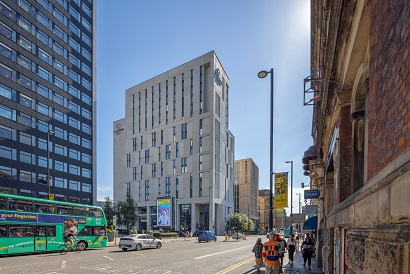Fab Fabricator Turns 30
CDW Systems has been a fab aluminium fabricator for 30 years. The company has been manufacturing and supplying trade and commercial installers nationwide...
Read Full Article
If aluminium did not exist, much of what we take for granted today would never have been possible, argues Wojciech Brozyna, managing director of Aluprof UK.
Aluminium is the third most abundant element in the Earth’s crust and it makes up 8% of it by parts per million. Once dubbed ‘the wonder metal’ for its light weight and high strength, its discovery continues to elevate human progress today.
Recyclability
Aluminium is infinitely recyclable, with no loss of characteristics. It only takes 5% of the original energy used to produce aluminium to recycle aluminium and the routes to recycling are well established.
Worth its weight
With the ‘clean’ scrap value of aluminium almost that of new prime aluminium, it is fair to say that we cannot get hold of enough scrap to meet the current recycling demand.
With an estimated total discovered and undiscovered bauxite (from which aluminium is extracted) resources across the globe to be in the region of 55 billion to 75 billion tonnes, we will not run out of new, prime aluminium anytime soon.
So where is the downside?
Like all metals, aluminium carries high embodied energy, described today as embodied carbon. This has been historically quoted as high as 20 tonnes of carbon for every tonne of aluminium produced when energy from fossil fuels is used to produce new prime aluminium from bauxite. So aluminium smelters have traditionally been located next to renewable energy resources, such as hydro power. Now the industry is looking at hydrogen power to further reduce embodied carbon.
Aluprof claims it is leading this low-carbon revolution. Using a greater recycled content to prime in aluminium can reduce embodied carbon to a very low parameter of 2.79 tCO2e (tonnes of CO2 equivalent) for low-carbon billets manufactured at the group’s low-carbon line at the factory in the southern Polish town of Kety.
These low levels of emissions have been achieved thanks to the use of the company’s cutting-edge plant for the manufacturing process and the high content of secondary raw materials in the form of recycled aluminium scrap at an average level of 65%. Whilst to some this may seem to still be a high carbon price to pay, consider the carbon savings using a product containing aluminium during its long lifespan compared to alternative materials which can create more carbon in their lifetime.
Desire outstrips supplly
Architects understandably want to specify low-carbon aluminium for future projects but with global aluminium recycling running at about 33% of all aluminium output, to source 65% scrap for specific projects will often mean extended lead times.
Credentials
In 2019 Aluprof released its EPD’s (environmental product declarations) produced by the Polish institute ITB, in accordance with the PN EN 15804 (construction product environmental declaration) standard and verified in accordance with ISO 14025. These are available to specifiers and customers of Aluprof and are constantly being updated and added to as we continue to update and improve our systems.
A number of Aluprof systems are also now Cradle to Cradle Certified (C2C) which is a globally recognised measure of safer, more sustainable products made for the circular economy. For more than a decade, C2C certification has been helping companies to innovate and optimise materials and products. Measured against the world’s most advanced science-based measures that assess the safety, circularity and responsibility of materials and products across five categories of sustainability performance.
Planting trees
Grupa Kety will be celebrating its seventieth anniversary in 2023. The anniversary is being marked with the group planting seventy thousand trees in Poland. The initiative will carbon offset a small portion of the group companies’ activities, yet together with other initiatives from Grupa Kety and Aluprof, these are a huge step forward in the direction of sustainability.
Picture: Commercial buildings feature large amounts of aluminium curtain walling – with products made with a large recycled element in high demand. The recycling characteristics of aluminium are great for fabricators operating in both the commercial and residentially markets.
Article written by Cathryn Ellis
18th January 2023